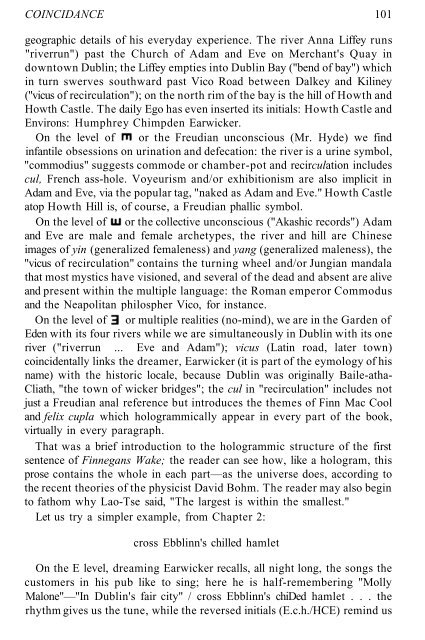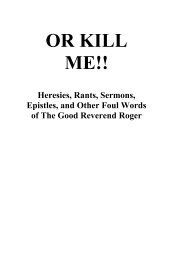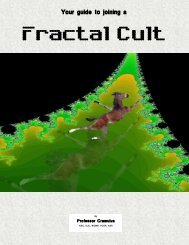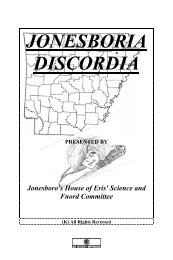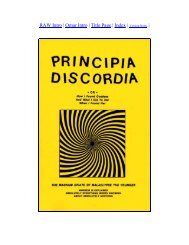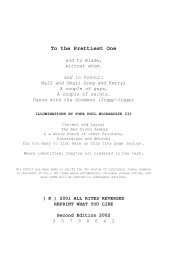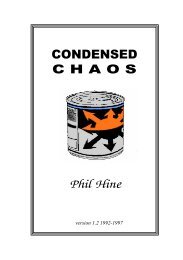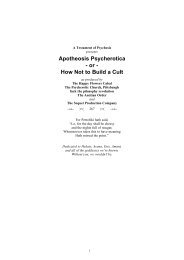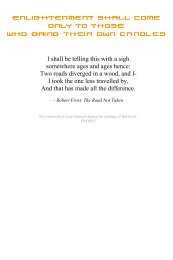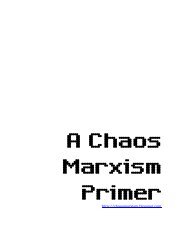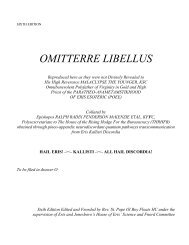Coincidance - Principia Discordia
Coincidance - Principia Discordia
Coincidance - Principia Discordia
You also want an ePaper? Increase the reach of your titles
YUMPU automatically turns print PDFs into web optimized ePapers that Google loves.
COINCIDANCE 101<br />
geographic details of his everyday experience. The river Anna Liffey runs<br />
"riverrun") past the Church of Adam and Eve on Merchant's Quay in<br />
downtown Dublin; the Liffey empties into Dublin Bay ("bend of bay") which<br />
in turn swerves southward past Vico Road between Dalkey and Kiliney<br />
("vicus of recirculation"); on the north rim of the bay is the hill of Howth and<br />
Howth Castle. The daily Ego has even inserted its initials: Howth Castle and<br />
Environs: Humphrey Chimpden Earwicker.<br />
On the level of or the Freudian unconscious (Mr. Hyde) we find<br />
infantile obsessions on urination and defecation: the river is a urine symbol,<br />
"commodius" suggests commode or chamber-pot and recirculation includes<br />
cul, French ass-hole. Voyeurism and/or exhibitionism are also implicit in<br />
Adam and Eve, via the popular tag, "naked as Adam and Eve." Howth Castle<br />
atop Howth Hill is, of course, a Freudian phallic symbol.<br />
On the level of or the collective unconscious ("Akashic records") Adam<br />
and Eve are male and female archetypes, the river and hill are Chinese<br />
images of yin (generalized femaleness) and yang (generalized maleness), the<br />
"vicus of recirculation" contains the turning wheel and/or Jungian mandala<br />
that most mystics have visioned, and several of the dead and absent are alive<br />
and present within the multiple language: the Roman emperor Commodus<br />
and the Neapolitan philospher Vico, for instance.<br />
On the level of or multiple realities (no-mind), we are in the Garden of<br />
Eden with its four rivers while we are simultaneously in Dublin with its one<br />
river ("riverrun ... Eve and Adam"); vicus (Latin road, later town)<br />
coincidentally links the dreamer, Earwicker (it is part of the eymology of his<br />
name) with the historic locale, because Dublin was originally Baile-atha-<br />
Cliath, "the town of wicker bridges"; the cul in "recirculation" includes not<br />
just a Freudian anal reference but introduces the themes of Finn Mac Cool<br />
and felix cupla which hologrammically appear in every part of the book,<br />
virtually in every paragraph.<br />
That was a brief introduction to the hologrammic structure of the first<br />
sentence of Finnegans Wake; the reader can see how, like a hologram, this<br />
prose contains the whole in each part—as the universe does, according to<br />
the recent theories of the physicist David Bohm. The reader may also begin<br />
to fathom why Lao-Tse said, "The largest is within the smallest."<br />
Let us try a simpler example, from Chapter 2:<br />
cross Ebblinn's chilled hamlet<br />
On the E level, dreaming Earwicker recalls, all night long, the songs the<br />
customers in his pub like to sing; here he is half-remembering "Molly<br />
Malone"—"In Dublin's fair city" / cross Ebblinn's chiDed hamlet . . . the<br />
rhythm gives us the tune, while the reversed initials (E.c.h./HCE) remind us


